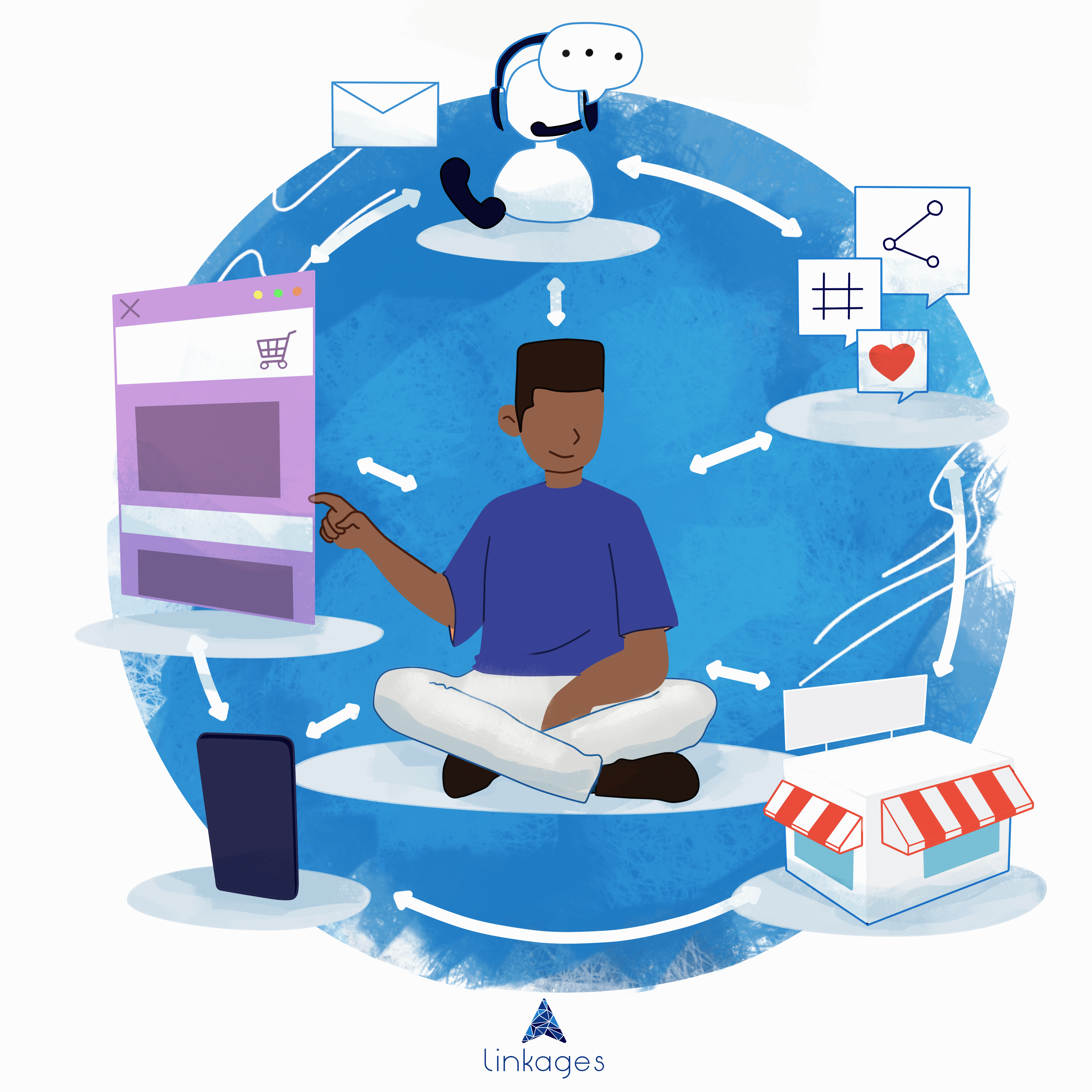In recent years, the business world has increasingly heard about the need to adopt omnichannel strategies. But after all, what does this mean in practice for the day to day of a business?
Omnichannel communication is a style of customer service where the customer is given the possibility to transit through several channels. In this way, the integration of experience improves the consumer journey as a whole.
This trend, which already showed signs, was boosted in 2020 by the Covid-19 pandemic. Already today, in 2023, we could say that it is practically mandatory in the eyes of consumers.
Including a survey carried out by the all in in 2022 determined that 60% of Brazilians prefer to buy in a hybrid way, alternating between physical and digital channels.
Evidently, this new behavior on the part of consumers drives companies to build more diverse dissemination and service strategies in order to maintain their competitiveness.
What does “omnichannel” mean?
If we study the meaning of the term, the word “omni” comes from Latin and means “everything”, while “channel” is “channel” in English. So omnichannel means “all channels”.
Therefore, we can define a channel as any point of interaction between a brand and its audience, including:
- site
- billboards
- Personal assistance
- Telephone
- Magazines or catalogs
- E-commerce
- Between others.
However, it is the integration of these channels which defines omnichannel communication. through this frictionless convergence between the physical world and the digital world, it is possible to guarantee consumers a complete, agile and modern experience.
For example: let's assume that a person wants to buy a new smartwatch (smart watch). After searching for reviews of models and brands on Google and YouTube, she asks her friends for directions on Instagram. Among the results, she finds the @ of a store and answers some questions by direct. While making his decision, he places the order through the store's e-commerce and chooses to pick up the device in person at a nearby unit.
At the end of the purchase, they send the receipts and tax documents via email and also inform them via direct from Instagram about a special condition: If the customer posts a story using the new product and tags the store's @, they receive a future discount .
In this way, the customer had a fluid experience with the brand, which quickly knew how to make him reach the purchase decision and even implemented a loyalty strategy. All of this without losing the line of reasoning, always putting the customer's preferences as a priority, which starts to perceive that brand as more valuable.
Benefits of an omnichannel strategy for any organization:

- Increased business visibility.
- Customer loyalty.
- Best shopping experience.
- Understanding the consumer profile.
- Journey customization.
- Great internal alignment.
- Process centralization.
- Increased efficiency.
Omnichannel vs Multichannel and cross channel
Unlike omnichannel, where the focus is on channel integration, multichannel and cross channel strategies have points in common but are not completely the same.
In the first place, “multichannel” explicitly refers to an organization that uses multiple channels to communicate and transact, such as a company that has a physical store and e-commerce, but they are not necessarily operationally integrated.
Secondly, thecross channel or crossed channels focuses on the complementarity that the channels can have with each other. For example, a customer arrives on Instagram to buy something and he is forwarded to WhatsApp or the store's website.
That is, the channel served to attract the customer to a certain point, where he needed to be referred to another environment.
Omnichannel: Multilevel Integration
To adopt an omnichannel strategy in your business, you need to understand how to make sure that the customer does not notice differences between the physical and digital environments, making all communication channels equal in effectiveness and agility.
At the same time, more subjective concepts such as design and voice tone they should also be considered as guidelines for integration in order to maintain the brand's identity in the customer's perception.
At this point, it is important to point out that impossible adopt an omnichannel strategy, where the channels are integrated, if the business as a whole is not integrated. A clear symptom of this is the existence of very marked divisions between departments that are unknown to each other in terms of processes and objectives.
In other words, concepts like efficiency, agility and personalized experience are the result of a very well-structured internal organization, where people know all the business processes. In this way, they are ready to solve possible problems and the focus is always on reduce communication friction.
Regardless of the area of expertise, it is crucial that the entire team of a business is aligned to meet the modern consumer and still remain relevant within the market.
Endomarketing as part of the omnichannel strategy

As, from the management point of view, integrated channel diversification implies:
- Align the strategies of all departments
- Optimize processes and reduce friction
- Knowledge management
- Keep people engaged and customer focused
- Bring physical and virtual environments together
We could not fail to mention the endomarketing as a fundamental part of the omnichannel strategy.
Although the focus is on service, anyone who owns a business knows that the quality of service is nothing more than a reflection of the internal organization and the company's interest in the customer (employees being the first channel of contact with a company on the part of of users)
Furthermore, processes such as stock integrations, recording and updating of interactions in CRM software, centralization of data and convergence of strategies are ways to optimize service, but have nothing to do with the customer itself.
For this reason, the endomarketing or internal marketing it's so important to achieving the operational fluidity and internal engagement necessary for a successful omnichannel strategy.
Fundamentals of internal marketing in any organization
so much andndomarketing how much the employer branding aim to increase productivity through the implementation of internal recognition and engagement routines.
Gone are the days when it was possible to stand out in the market at the expense of an exhausted army of unmotivated employees. To achieve real results, you need to innovate and give reasons for the teams to “wear the shirt”, because the brand experience is lived first by them, even before the customers.
Some endomarketing actions focused on omnichannel include:
- engagement strategy
- Standardization of internal communication
- Adoption of agile communication methodologies
- Team knowledge management
- Integration dynamics of different departments
- Periodic performance reviews.
- Among others.
Final considerations

There's no denying that times are changing fast. On the one hand, consumer behavior is increasingly demanding and other people's opinions gain enormous relevance with just one click.
On the other hand, there is an increase in the liquidity of work relationships, while people look for cultural affinity within companies and value environments where recognition and collaboration reign, so that they can commit to delivering expressive results that will “beyond the bare minimum”.
Everything indicates that, to make the machine turn, there is nothing better than following the example of large companies such as Disney, Toyota or Itaú, who have already faced this dilemma and come to the conclusion that omnichannel strategy and endomarketing need to go hand in hand to fully extract its full potential.
How can we help you?
THE Links, in addition to offering services of skilled labor mapping and partner suppliers, also has a team of specialists in internal communication and information design.
We reinforce the culture of your employer brand so that you can keep the best talent in the market always satisfied and generating results for your organization. We also facilitate the integration of your teams and optimize the company's knowledge management through unique and easy-to-assimilate materials.
In this way, the end consumer experience of your brand will always reflect the efficiency and operational alignment of your team as a whole.
Do you think we may have the right solution for your business?




